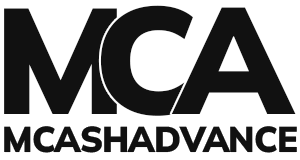
You might be under the impression that Merchant Cash Advances (MCAs) are a relatively new form of business financing, especially given their surge in popularity during the 2008-09 financial crisis. However, the roots of MCAs go back to the 1990s. Over the years, they’ve evolved from a niche financial product into a mainstream alternative to traditional bank loans.
In this article, we’ll guide you through the journey of the MCA industry, from its inception to its current state, so you can fully grasp its evolution and significance in today’s business financing landscape.
What Is the Merchant Cash Advance Industry?
The MCA industry is a sector within the broader alternative financial services market that specializes in providing short-term financing solutions to businesses. Unlike traditional lenders, MCA providers use a business’s future credit card sales or revenue streams as the basis for funding. MCAs are provided by mostly fintech companies and alternative lenders.

Who Started MCAs?
The industry originated in the 1990s with AdvanceMe as a key player. They secured a patent for split-funding, enabling merchants to divide transactions across multiple accounts. This innovation is central to MCAs and highlights AdvanceMe’s early influence. To repay an MCA, the lender would take a portion of your business’s credit card sales, usually depositing it into a separate account. This model caught on, and other providers began offering MCAs.
Repayment Option Growth
Technological advancements have expanded repayment methods and evolved the MCA landscape to include ACH transactions and revenue-based financing. These advancements facilitate easier repayment deductions, contributing to industry growth and attracting more lenders into the industry. There are three main methods for MCA repayments that offer lenders various ways to handle deductions. For a detailed understanding of these repayment methods that lenders use, read how to repay an MCA.
Impact of the 2008 Recession
The 2008 financial crisis served as an unexpected catalyst for the MCA industry. When traditional banks and lending institutions tightened their lending criteria, limiting businesses’ access to essential credit and capital, the MCA industry stepped in. MCAs quickly became the go-to avenue for immediate, accessible funding for small businesses that process credit cards. The financial crisis helped fuel the industry’s rapid growth and also elevated its status as a mainstream alternative to traditional business financing.
How Big Is the MCA Industry?
If you’re wondering about the size of the MCA market, consider this: AdvanceMe reported a funding of $9 million in 1999, which skyrocketed to $200 million by 2006. This growth trajectory shows you just how much appetite there is for these financial solutions.
The merchant cash advance market is expected to witness a dramatic growth estimated to reach close to USD 1140 billion by 2028 with a CAGR anticipated at 15.5%
Current State of the Industry
According to adroitmarketresearch.com, the global MCA industry is expected to reach $26.3 Billion by 2029, with an annualized growth rate of 5.03%. The industry is also projected to grow to nearly USD 1140 billion by 2028, with a CAGR of 15.5%.
This isn’t just numerical growth; it reflects fintech companies entering the market, offering innovative solutions that make MCAs more accessible.
The industry’s expansion is also fueled by the rise of SMEs requiring fast, accessible funding. Traditional banks, often slow to meet market needs, are being bypassed as MCAs offer quicker, more flexible financing options.
The MCA industry is experiencing rapid growth, heightened competition, and ongoing innovation, positioning it as a significant force in alternative business financing’s future.
Major Digital Brands Entering the MCA Market
The MCA industry’s growth is attracting major digital brands outside the traditional financing sector. Companies like DoorDash, Amazon, Square, and Shopify are leveraging their customer bases to diversify into MCAs.
DoorDash offers MCAs to restaurant owners, complementing its delivery services. Amazon began providing MCAs to sellers in 2022, using its e-commerce platform for quick funding. Square, known for point-of-sale systems, and Shopify, an e-commerce leader, have also entered the market, offering MCAs to their existing customers.
This trend represents a strategic move for these digital brands. By adding MCAs to their service offerings, they’re generating new revenue streams and deepening customer relationships, creating a more integrated ecosystem around their core services.
MCA Industry Regulation
The MCA industry in the USA doesn’t follow the same rules as traditional loan sectors, staying outside the control of bodies like the Consumer Financial Protection Bureau (CFPB) and the Federal Reserve. MCAs are seen as business deals, not loans, so they skip usual lending rules. This situation has led to some bad business practices in the MCA industry, with accusations of unfair or deceptive actions.
Recently, there’s growing attention from state and federal authorities on MCAs. The way MCAs are classified lets them avoid common lending rules, like the usury laws that limit interest rates. The main rule for MCAs comes from the Uniform Commercial Code, but this doesn’t control the costs and fees.
Now, new rules are being made to separate MCAs from regular loans, aiming to make things clearer and fairer. States like New York, California, Utah, and Virginia have made new laws to help and protect people using MCAs.
In 2022, the Federal Trade Commission acted to stop some unfair actions by MCA providers. This move shows a growing effort towards tighter control, hinting that more rules may come to prevent unfair lending practices in the MCA industry. Due to these changes, it’s important for businesses using MCAs to talk to legal or financial experts to understand the new rules better.

The Future of the MCA Industry
The MCA industry is evolving, with potential regulatory shifts, major digital brands entering the market, and technological innovations. Anticipated regulatory focus from state and federal authorities aims to bring transparency and fair practices, addressing concerns related to usury laws and deceptive practices. This scrutiny could enhance the regulatory framework within the MCA industry, potentially leading MCA providers to adhere to rules more similar to traditional financing. This shift could position MCAs as a more reliable and regulated financing option.
Amazon, DoorDash, Square, and Shopify signifies a new type of competition entering the industry. Their presence may drive better service offerings, enhanced technology integration, and possibly lower fees due to increased competition.
Ready to Apply?
or learn more about merchant cash advances
The Bottom Line
The MCA industry has gained traction as a viable alternative financing solution since the 1990s. Economic downturns, where traditional lenders tighten capital and credit to small businesses, have grown the popularity of MCAs, offering a vital lifeline to small businesses in distress.
The emerging regulatory scrutiny from regulatory bodies in the USA is set to bring in enhanced regulation, crucial for creating a more reputable and transparent industry, essential for its sustainability and growth. The entry of large players into the MCA market is also going to make MCAs more well known and more popular, broadening its appeal to a wider spectrum of businesses.
As MCAs progressively carve out a bigger percentage of the alternative financing space, the upcoming years will play a critical role in determining the future of the industry. Adapting to regulatory alterations, harnessing technological advancements, and adhering to ethical business practices will determine how big the MCA industry will grow.

